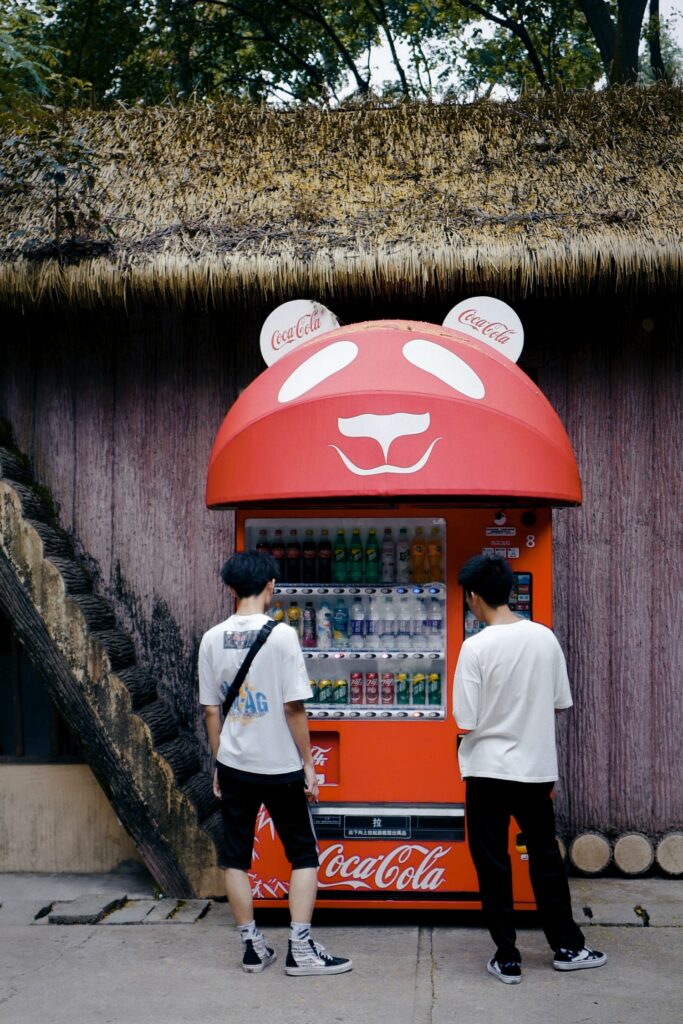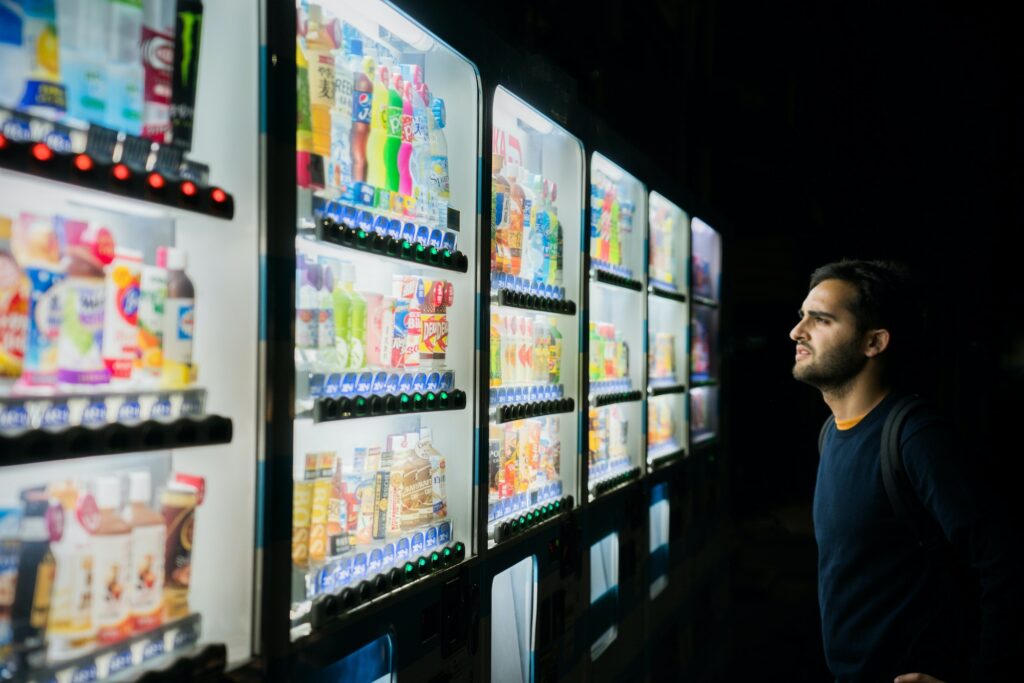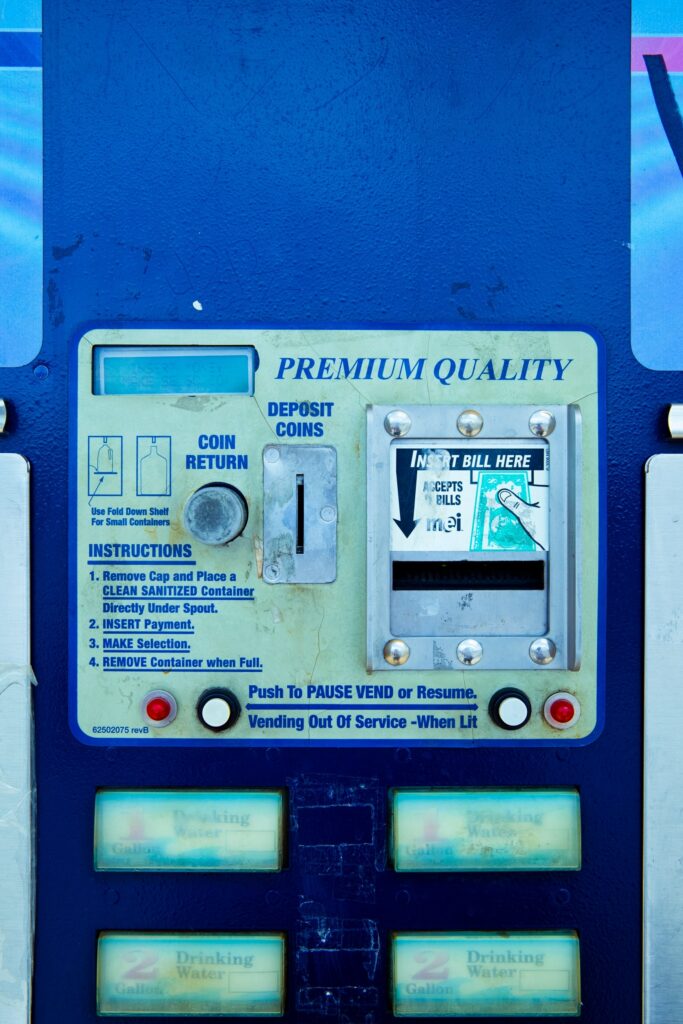F is for Food...Fast.
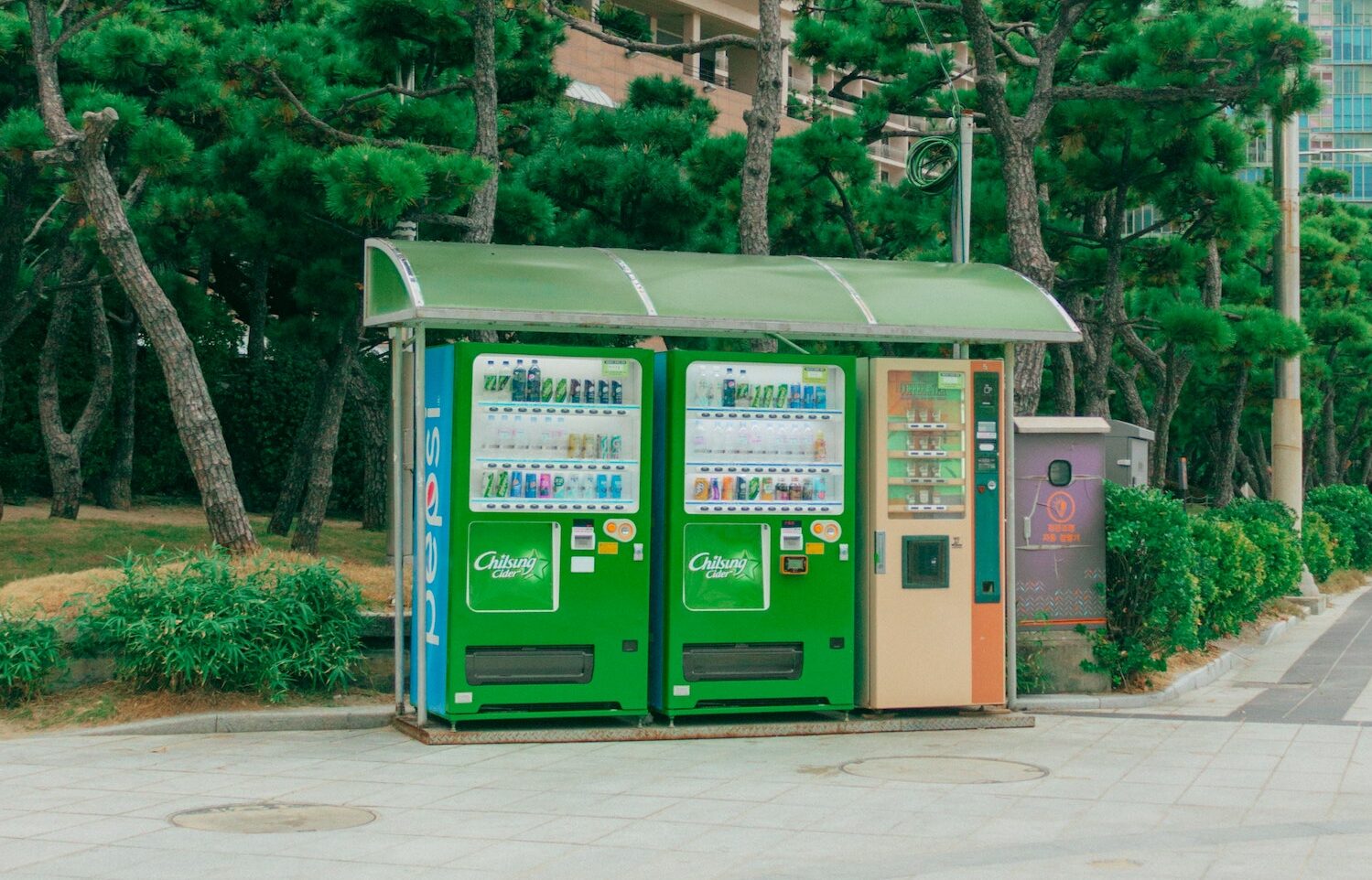
Love it or loathe it, convenience is at the heart of modern human culture. We’re constantly on the go, seeking time-saving solutions for our everyday “needs”. And when it comes to satisfying our hunger pangs, vending machines have emerged as a game-changer. These machines have revolutionised the global market, taking in roughly £15 billion in 2022.

Believe it or not, vending machines have been around for centuries. In fact, the Greeks were using them as early as the 1st Century. Back then, they used vending machines to purchase holy water at temples. Talk about convenience standing the test of time…
Fast forward to the 1800s, and we find the world’s first automat in Berlin, serving the bustling city life. Berliners needed quick meals to keep them fuelled and on the go, and the coin-operating [and food dispensing] machines provided just that. A hot meal at the touch of a button — the ideal design for on-the-go life.
Later in the century, Amsterdam became the centre of the automat craze. These automated vending machines offered fast and easy hot meals for those needing a quick bite. No time for seating; grab your food and continue your day. It was all about efficiency and speed, catering to their hectic routines’ demands.
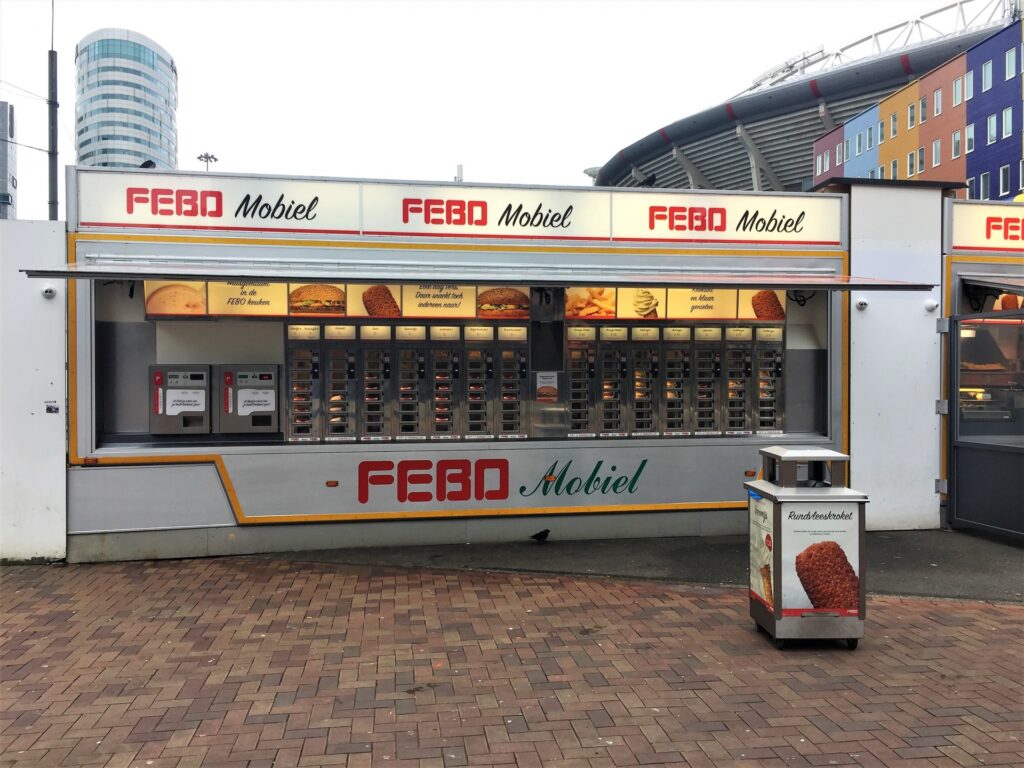
What about today? They're not just machines for candy, sweets and soda. Instead, if you venture into the picturesque French countryside, you’ll discover nearly 80,000 vending machines scattered across the landscape. These machines provide myriad products, from cheese, pizza, oysters, bread, and fresh vegetables. It is even more remarkable that these vending machines act as a sales route for rural farmers: ensuring fresh, local produce is easily accessible to customers in remote areas.
With the recent pandemic, farmers had to find a way of getting food to people as getting the products to consumers was difficult, and getting them to the store to buy wasn’t as easy as it was in pre-2020. So, the French farmers changed their direction: as well as ‘putting food where the people are’, they incorporated the idea of ‘also putting them where the food is’. This played well during the contactless times and during the rise of the want for more local and organic produce. It’s a win-win situation for both farmers and consumers.
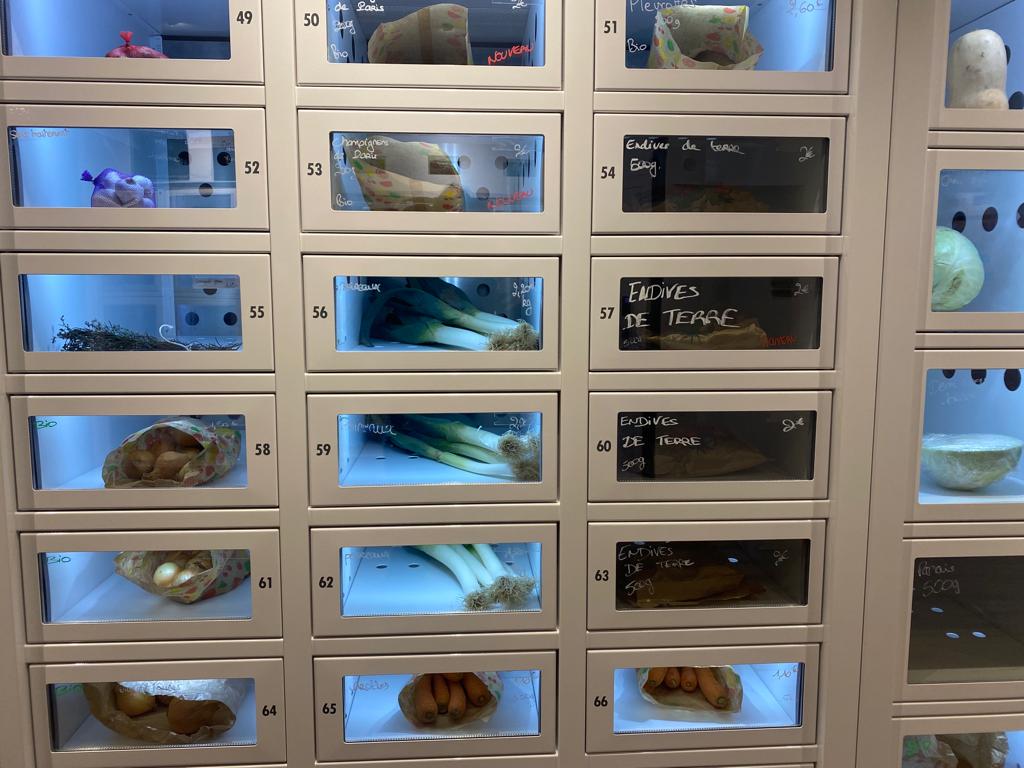
But when it comes to vending machines, one country reigns supreme — Japan, the vending machine capital of the world. With over 5.5 million vending machines, Japan boasts the world’s highest number of machines per capita. There’s approximately one vending machine for every 23 people — a great example of accessibility on a whole other level.
And it’s not just the quantity that’s impressive. Japanese vending machines offer an incredible variety of products, from beverages and snacks to fresh fruit, clothing, toys, and even bear meat. With features like electronic payment options and futuristic innovations, these machines truly reflect Japan’s dedication to efficiency, accessibility, and seamless integration of technology into everyday life.
Photographer Eiji Ohashi captures Japan’s lonely vending machines around Japan. Although some said that in the infrastructure development after the Great East Japan Earthquake, vending machines were not particularly necessary, Eiji’s photos convince us that these warmly lit drink machines are very much needed to quench your thirst at the top of the mountain, ghost towns, or in the middle of vast farmland.
I was drawn to the vending machines glowing on the road on a snowy night. Of course, vending machines are just machines, but their appearance reminded me of a human being somehow.
- Eiji Ohashi
One car repair centre in Kanagawa, Japan, has over 80 retro vending machines to entertain customers while waiting for their cars to be fixed. Serving hot noodles, hamburgers, toasted sandwiches, and even toy model sets and fortune slips, it not only entertains and feeds people, but for the parents and elderly customers, it brings back memories with these well-kept retro boxes filled with goodies [and memories].
Now, let’s zoom out and explore the broader impact of vending machines on the global market. The retail vending machine market was valued at USD 18.3 billion in 2022 and is projected to grow at a compound annual growth rate [CAGR] of 7.5% from 2022 to 2032. This growth is driven by the increasing demand for on-the-go snacks and beverages that align perfectly with our time-pressed routines.
Vending machines offer convenience and quick delivery, making them a popular choice for accessing food and drink in various settings such as offices, restaurants, bars, and public places. They have become a vital part of our everyday lives, satisfying our cravings in the most convenient way possible.
The COVID-19 pandemic posed challenges for the consumer goods industry, including vending machine operators, leading to a decline in revenue. However, vending machines also presented opportunities for generating significant income by selling not only snacks and beverages but also other consumables like books and violin strings. By strategically placing vending machines in office blocks, schools, malls, train stations, and airports, operators maximise sales opportunities and cater to the needs of busy individuals.
The demand for healthier food and beverage options is on the rise, too, with sales of zero-sugar beverages increasing and high-sugar content beverages experiencing a decline. Additionally, beauty and personal care retail vending machines are gaining popularity, offering products such as shaving creams, deodorants, and makeup removers in shopping malls, spas, barber shops, and airports. Vending machines are evolving to cater to our ever-changing preferences, providing options that align with our needs.
Regarding payment modes, cash still dominates the retail vending machine market, accounting for over 74% of the overall revenue in 2021. However, cashless payment methods have rapidly gained traction since the recent pandemic, offering advantages such as reduced cash handling losses, time and cost savings, and hygienic transactions. As technology advances, we can expect more seamless and convenient payment options integrated into vending machines.
Looking ahead, the retail vending machine market shows no signs of slowing down. Its convenience and accessibility cater to our fast-paced lifestyles and demand for healthier options. So, the next time you encounter a vending machine, take a moment to appreciate the innovation and cultural convenience it represents. It’s a testament to our human desire for efficiency and seamless experiences in our daily lives.
Photo Credit / Victoriano Izquierdo / billow926 / Margarida da Mota / Aleksandar Pasaric / Cameron Casey /
Ekaterina Belinskaya / Louis / Guy Percival

